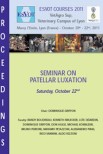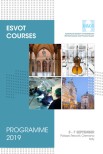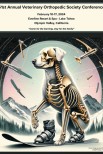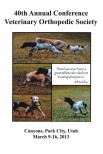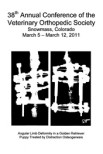Objective: To determine whether a secondary plate on the caudolateral aspect of the scapula increases stiffness and reduces primary plate strain compared to a single plate along the cranial scapula spine in a comminuted fracture gap model.
Study design: Ex vivo mechanical study.
Sample population: A total of 14 paired canine scapulae.
Methods: A comminuted fracture gap model was created. A 2.4 mm plate was secured along the cranial aspect of the scapula spine in 28 scapulae. A secondary 2.0 mm plate was secured on the caudolateral border of 14 scapulae. Scapula were sinusoidally loaded from -20 to -200 N for 7200 cycles at 2 Hz. The displacement was measured, and stiffness calculated. Digital image correlation calculated primary plate surface strain. A two-way ANOVA assessed displacement and stiffness. Primary plate strain was assessed with a paired t-test. Statistical significance was set at p < .05.
Results: Mean displacement was higher in the single plate group, -0.81 mm (± 0.14) compared to the double plate group, -0.48 mm (± 0.08) (p < .0001). Mean stiffness was lower in the single plate group, 392.8 N/mm (± 13.72) compared to the double plate group, 563.7 N/mm (± 5.89) (p <.0001). There was no difference in primary plate surface strain between the two groups.
Conclusion: Double plate fixation improved stiffness in a comminuted scapula fracture gap model compared to single plate fixation.
Clinical significance: The placement of an additional plate placed on the caudolateral aspect of the scapula improves stiffness in comminuted scapula body fractures.
